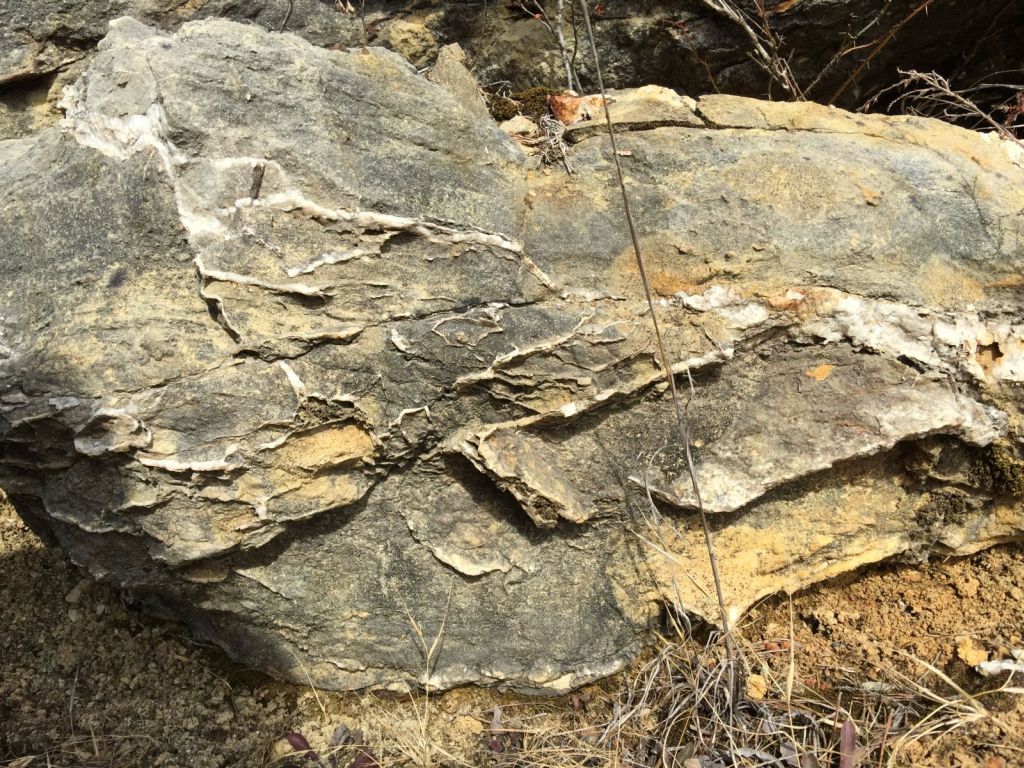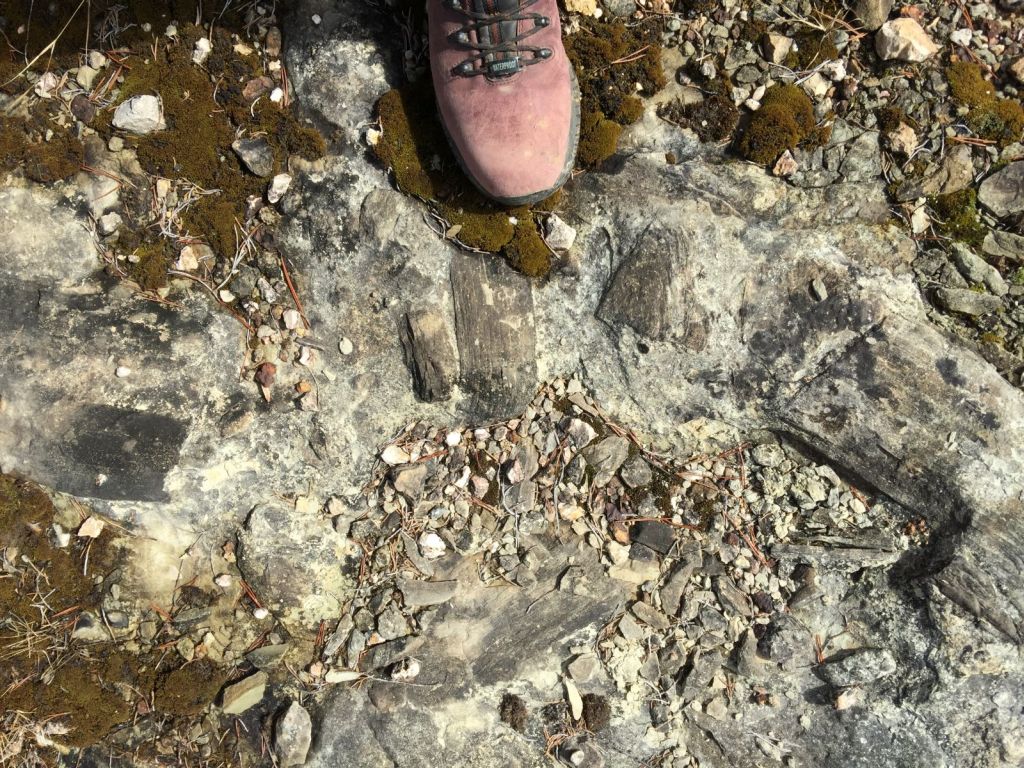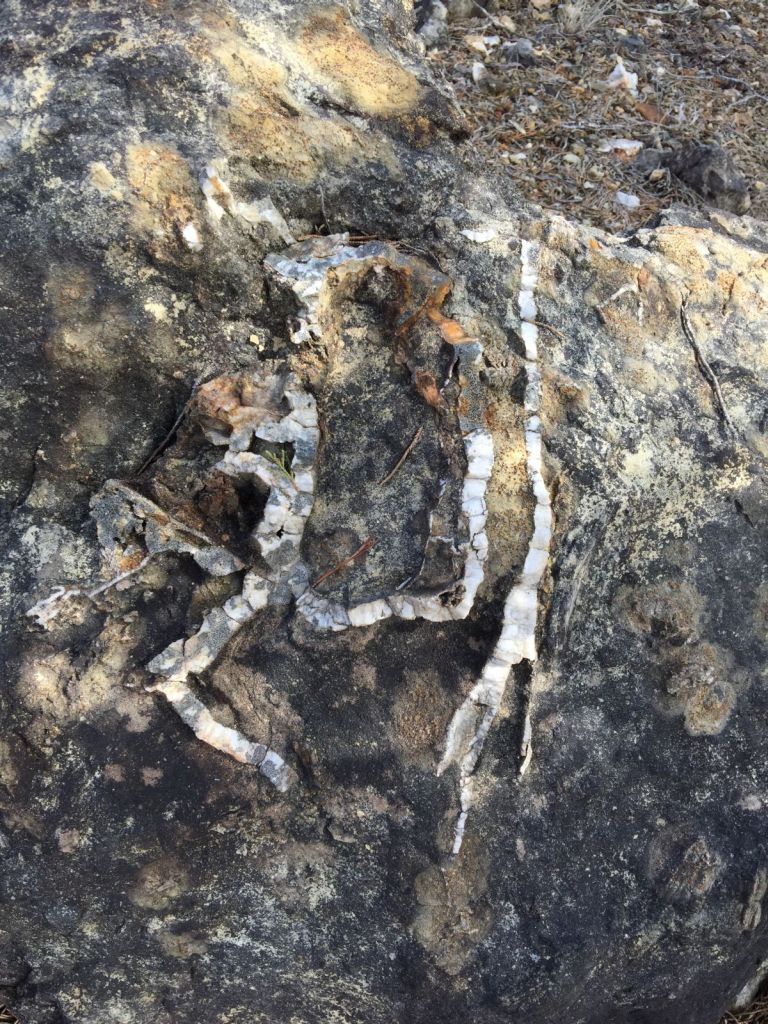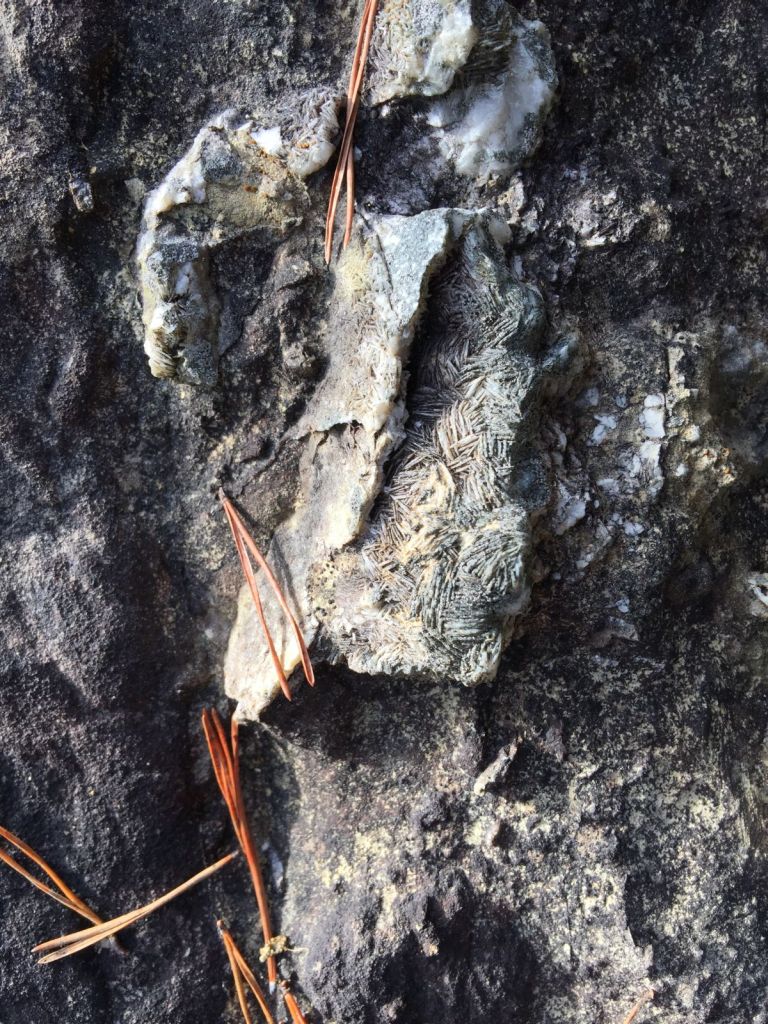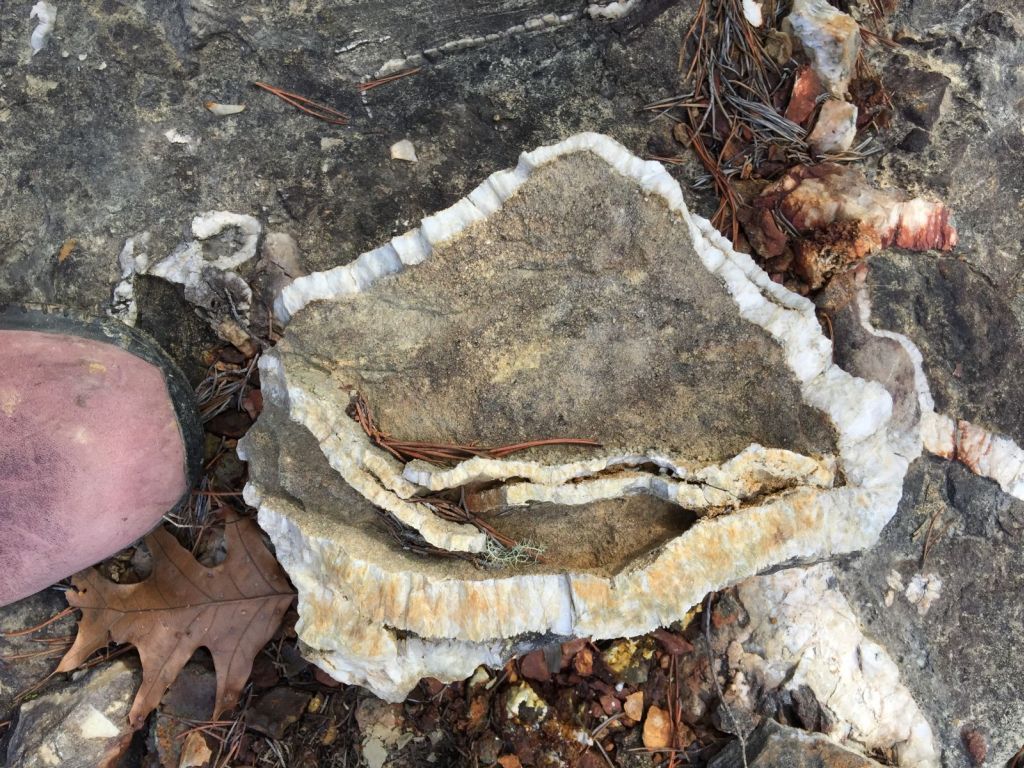EAST TENNESSEE GEOLOGICAL SOCIETY
| Selected Geologic Features in the Vicinity of |
| Sharp's Chapel, Union County, Tennessee |
| February 03, 2018 |
| Trip Leader: Travis A. Paris |
A similiar field trip to the Sharp's Chapel area was conducted back in November 2008 but to rekindle awareness of the geology near Sharp's Chapel, on a cold winter day, field trip leader Travis Paris escorted ETGS members back to the previous stromatolite fossil and New Prospect zinc-lead mine sites and a new location Lost Creek barite mine. A road log was followed starting from the Knox/Union County Line to the three geologic stops.
All photos taken were by Bob Gelinas.
Stromatolite Fossil Site (near Claiborne County boat ramp)
Fossils at this site can best be viewed during low water (winter pool). Fossils are found in outcrops of fine grained, slightly argillaceous, limestone that is part of the Chckamauga Group middle Ordovician in age. Left of the boat ramp, outcrops containing bryozoa, crinoid, brachiopod, and trilobite fragments can be found while exposures to the right are dominated by single and clusters of large stromatolites.
|
|
|
|
|
|
|
|
New Prospect Zinc-Lead Mine
Ore of the mine is located on the eastern side of a domal structure known as the Lead Mine Bend dome of the Cambrian upper Maynardville Limestone. The mine is also on the southern limb of the Powell River anticline. The mine was operated from 1883-1888, 1889-1897, 1898-1901, 1914-1918, and during World War II. An estimated 195,000 tons of ore and concentrate has been removed. The mine floor is flat and shows brecciation and slickenslides while the roof is brecciated but poorly mineralized. During World War II production, ore bearing roof support pillars were removed currently making the mine roof unstable. Hard hats were worn if mine exploring was conducted.
 |
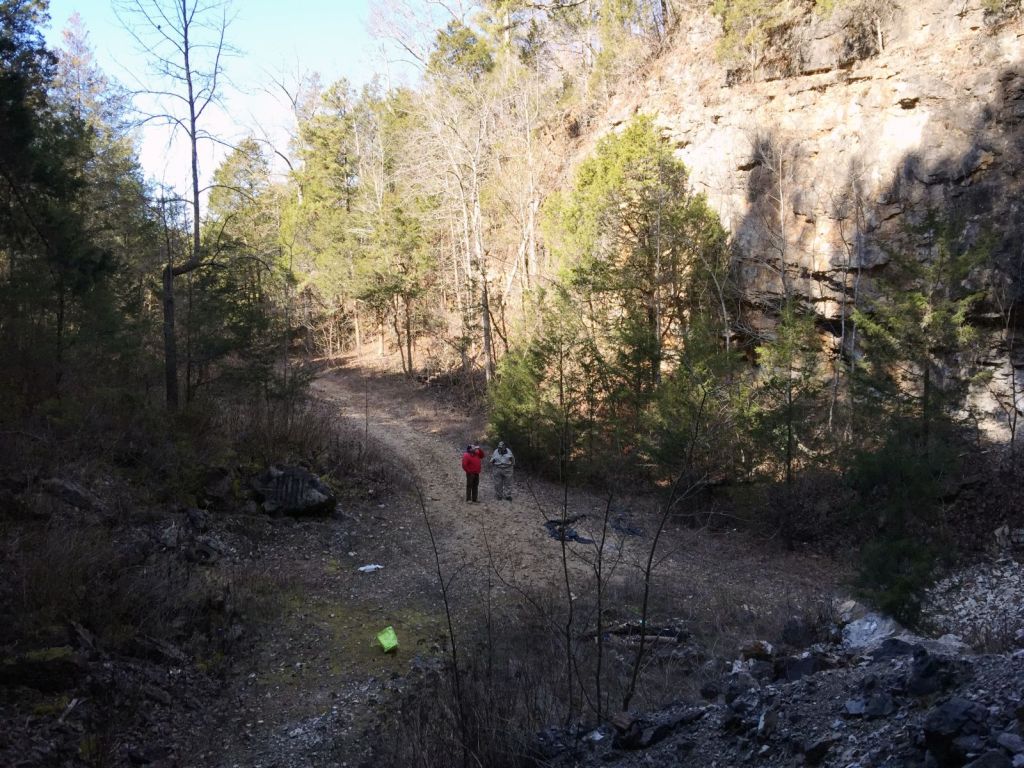 |
|
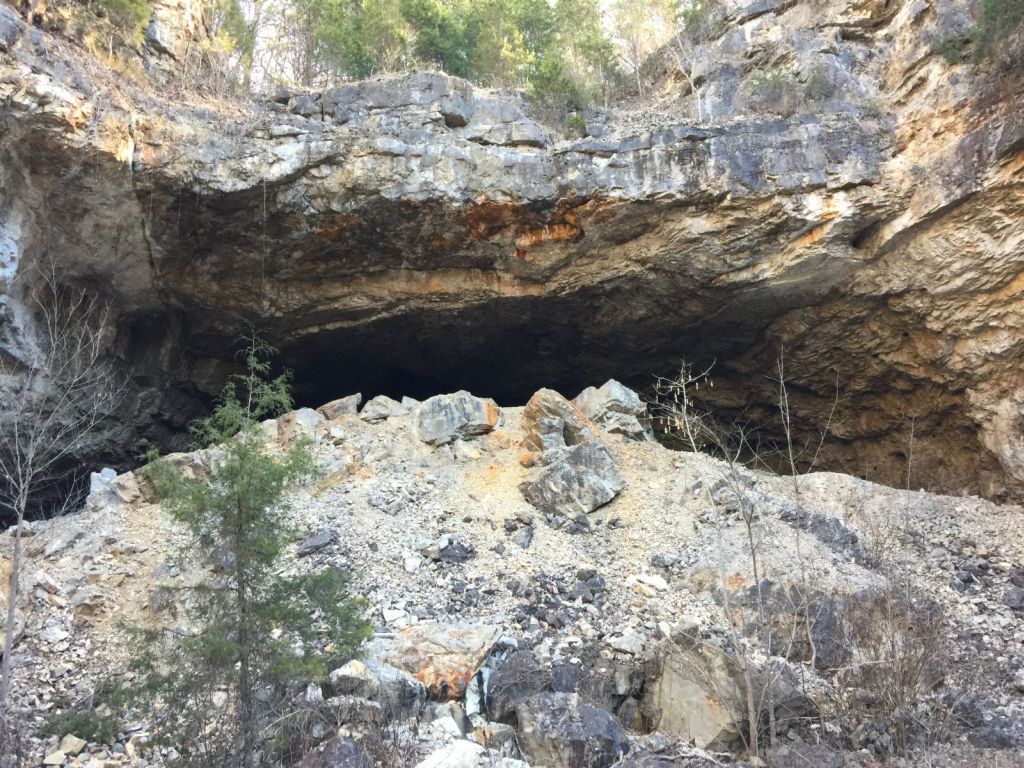 |
 |
|
 |
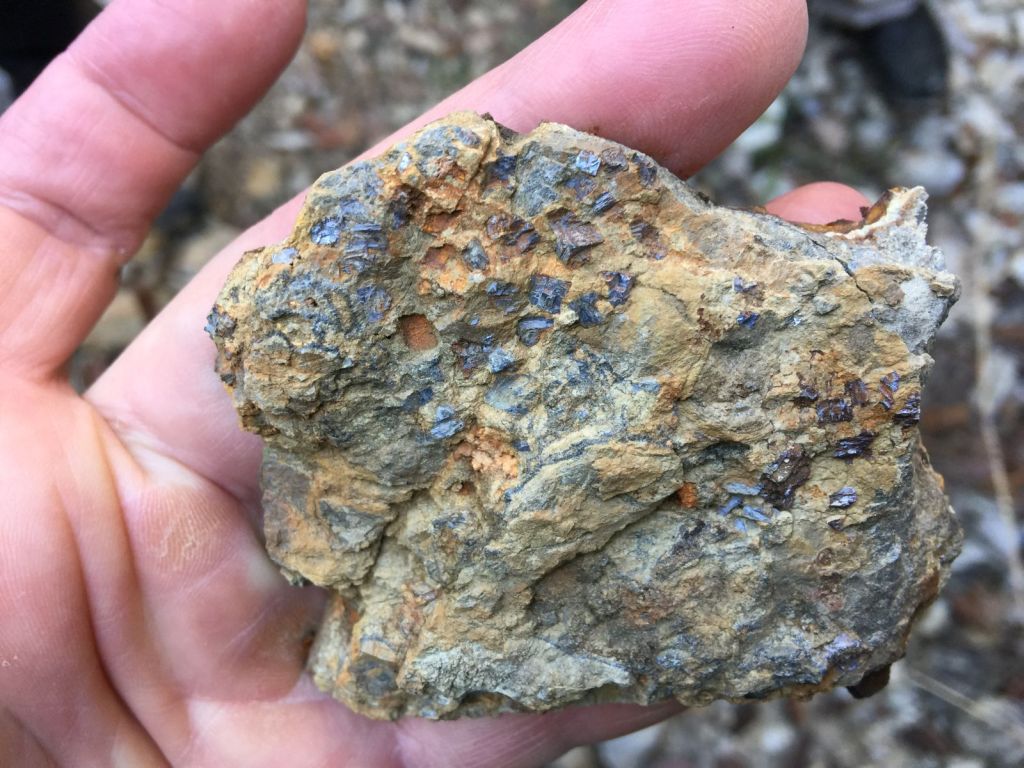 |
Lost Creek Barite Mine
The Lost Creek Barite mine is a lone deposit on the north side of Norris Lake in Northern Union County. It operated as an open pit mine from 1938-1940 until is was described as being mined out. In 1965-1966, it reopened and was able to produce 2,500 tons of barite concentrate. Thorugh research and other mineral work, Travis Paris believes the breccia bearing barite deposit is the result of a hydrothermal breakthough confined to the lower Ordovician Mascot formation. Minerals found within this breccia are barite, pyrite, and trace amounts of sphalerite.
|
|
|
|
|
|
|
|
ETGS extends special thanks to Travis Paris who graciously contributed assembly and production of the detailed guide book as well as his time and knowledge of Union County geology.
|
Page updated
May 26, 2018 |






